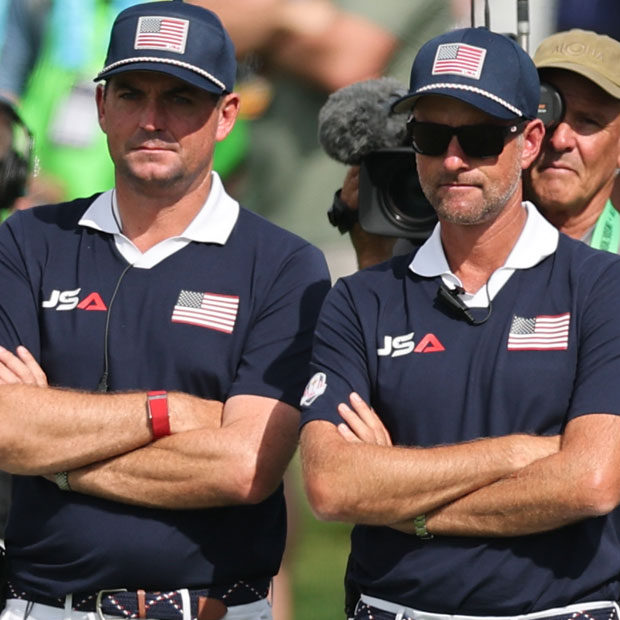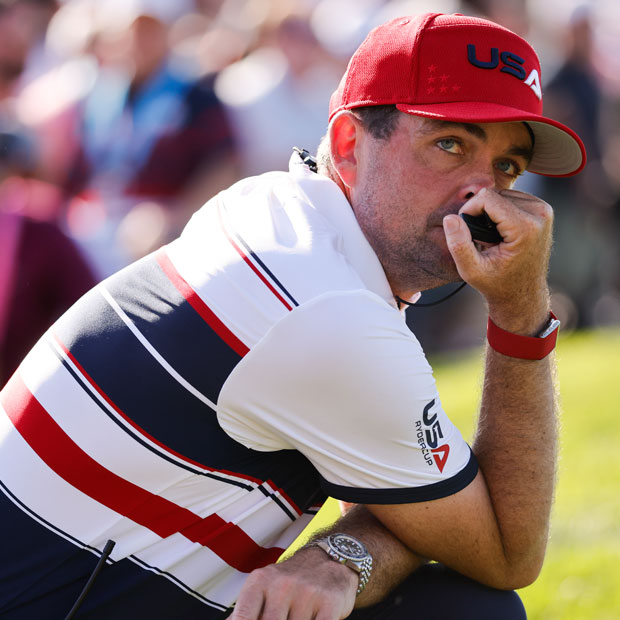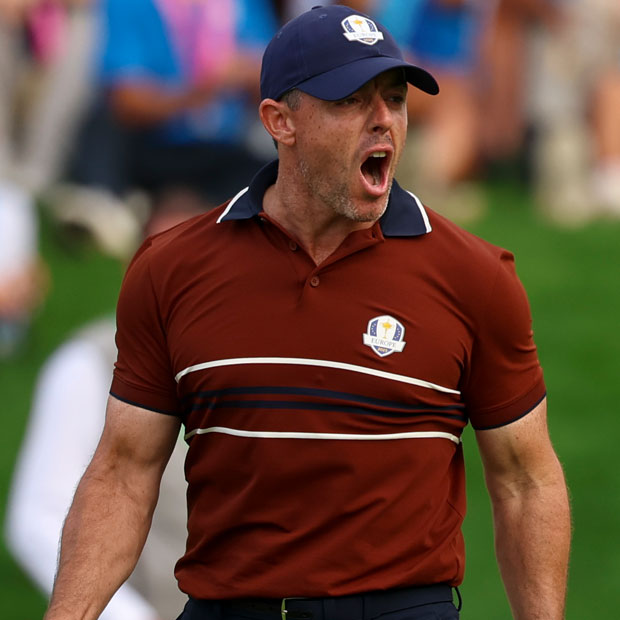Hyannisport Club
Hyannisport’s reliance on the elements of setting, terrain, and routing conceals the hand of the designer and directs the player’s attention toward the views, the journey, and the golf shots

Hyannis Port, Massachusetts, USA
John Reid (original six-hole design, 1897), Alex Findlay (expansion to nine holes, 1902), Donald Ross (expansion to 18 holes, 1913; redesign, 1936), Ron Forse (restoration work, 1989-present)
Private
$$$
The golf course at Hyannisport Club was developed by three Scotsman, each a major figure in the early American game. John Reid, the architect of the first three holes at the oldest golf club in the U.S. (Saint Andrews near Yonkers, New York) and one of the founders of the USGA, laid out the initial golf course at Hyannisport in 1897—six holes on a hillside with views of Nantucket Sound. In 1902, Alex Findlay, a contender for the title of “Father of American Golf,” installed a new nine-hole design on additional land that the club had purchased. Then, in 1913, Donald Ross, at the very beginning of his full-time design career, expanded the course to 18 holes. Ross likely continued to advise the club on course changes through the 1910s and 20s, and in 1930 he drew up plans for a longer, more challenging layout, with several holes pressed against Hall’s Creek Estuary. Because of the financial uncertainty created by the Wall Street crash of 1929, Hyannisport held off on implementing Ross’s recommendations until 1936.
After drifting away from its Golden Age roots in the mid-20th century, the club engaged Ron Forse in 1990 to carry out a long-term restoration plan. In several different phases over the past 34 years, Forse has widened playing corridors, restored bunker positions and styles, expanded greens, and recaptured some of Hyannisport’s Ross flavor.
{{content-block-course-profile-hyannisport-club-001}}
Take Note…
Camelot’s hideaway. Hyannisport Club is perhaps best known as the summer retreat of the Kennedy family. Joseph P. Kennedy, father of John F. and Robert F., joined in the 1920s after being denied membership at another club because of his Irish Catholic heritage. The Kennedy Compound is located about 500 yards from Hyannisport’s 18th green, and JFK played the course frequently during his presidency. Various scions of the family can be still found recreating at the club during the warm months.
Remnants of Findlay. A handful of Hyannisport’s present-day holes are holdovers from Alex Findlay’s nine-hole layout. One of these is the stunning 16th, a par 5 that plays along the edge of the estuary, up and over a rise, to a low-lying green framed by Nantucket Sound.
A Ross revelation. In August 2021, Donald Ross scholar Sven Nilsen found a Boston Evening Transcript article identifying Ross as the architect behind Hyannisport’s expansion to 18 holes in 1913. Before this discovery, the details of the course’s evolution between Alex Findlay’s 1902 design and Ross’s 1930 redesign had been a mystery. The fact that Ross was involved as early as 1913 is eye-catching: very few extant clubs not named Oakley, Pinehurst, or Essex County can claim an earlier association with the architect.
Five-and-Dime, part two. In what I believe to be the most ambitious single change of Ron Forse’s three-decade tenure at Hyannisport, the second green is currently being moved back and benched into a hillside on the left. The design, inspired by Ross’s 1930 drawings, resembles that of A.W. Tillinghast’s “Five-and-Dime” hole at Ridgewood Country Club—a short par 4, potentially drivable for long hitters, with an elevated, heavily bunkered green offset from the fairway. It’s a smart idea, given that the former second hole was somewhat pedestrian, but the trick will be making the new green feel compatible with the 17 others, almost all of which are low-lying and open-fronted. Alternatively, the club could choose to rebuild the rest of the greens to Ross’s specs, which call for more complex, varied shapes and contours than presently exist, or ever existed, at Hyannisport.
{{content-block-course-profile-hyannisport-club-002}}
A Cape day. If you travel all the way to Hyannisport Club, you might as well make a day of it on Cape Cod. The club’s friendly golf staff recommended lunch at Baxter’s Boathouse, a popular Hyannis Port institution that was unfortunately closed when I visited. For a second round of the day, I urge you to drive farther out on the Cape to Highland Links. This rustic nine-holer dates back to 1892 and is draped across sandy seaside bluffs that became part of the federally administered Cape Cod National Seashore in 1961.
Favorite Hole
No. 3, par 4, 363 yards
Hyannisport’s first and most exciting encounter with Hall’s Creek Estuary, the third hole bends around a marshy inlet and finishes at a semi-island green complex. The “wow” factor here is undeniable and accounts for much of the hole’s appeal, but there are strategic questions to consider as well.
Favorite Hole
No. 3, par 4, 363 yards
Hyannisport’s first and most exciting encounter with Hall’s Creek Estuary, the third hole bends around a marshy inlet and finishes at a semi-island green complex. The “wow” factor here is undeniable and accounts for much of the hole’s appeal, but there are strategic questions to consider as well.
This Cape-style par 4 is a rare example of a Golden Age hole that may have benefited from the past century’s distance gains in golf. Using modern equipment (and playing from the proper tees), most players will face a tough decision from the tee: either hedge right, clubbing down in order to stay short of the fourth fairway and the marsh beyond; or take on the diagonal carry to the left, with the potential reward of a short, straight-on approach. The farther up a tee shot is pushed, however, the more angled and surrounded by water the landing zone becomes.
The open front of the green and the slight downhill cant of the approach encourage run-up play—an appealing option when the turf is firm and the wind is up. Missing long or left isn’t quite as devastating as it looks: when it’s not high tide, you can often play a ball from the seagrass.
{{content-block-course-profile-hyannisport-club-003}}
Overall Thoughts
I have a theory that if C.B. Macdonald had tried to build National Golf Links of America on Cape Cod instead of Long Island, Boston’s golfing elite would have run him out of town. I think they would have found Macdonald’s dream of creating the world’s greatest golf course arrogant and gauche. The Boston area’s top golf clubs have always preferred a lower profile. Their members, one senses, would like to avoid the attention that obvious architectural brilliance brings. It’s nice to play a top-20 course every day, but maybe nicer to play a top-200 course that no one has seen on Instagram.
This might be an overgeneralization, but it gets at a truth about golf course design in New England broadly and Boston specifically. The Country Club, Myopia Hunt Club, Essex County Club, and the Kittansett Club have quieter, more restrained golf architecture than the best Golden Age courses near New York City and Philadelphia. Boston-area clubs are also slower to react to trends and less likely to spend big on renovations.
Hyannisport Club exemplifies these tendencies. Its design is strikingly simple. Many of the fairway landing zones are un-bunkered, putting the onus on topography to generate strategy and challenge on the tee shots. Most of the greens are uncomplicated—with subtle tilts, rolls, and runoffs distinguishing each from the others—and fairly small, even though Ron Forse expanded them in the late aughts. As a result, the course’s individuality comes primarily from setting, terrain, and routing. Fortunately, Hyannisport has significant strengths in all three of those areas:
Setting—The club’s perch above Nantucket Sound not only provides memorable views but also exposes the course to strong, unpredictable winds. Combined with reliably firm conditions and open, at-grade entrances to most of the greens, Hyannisport’s seaside location allows for a decent facsimile of links golf.
Terrain—The closer you get to the water on Hyannisport’s property, the more interesting the land becomes. The topsy-turvy undulations near Hall’s Creek Estuary affect almost every hole; only Nos. 12, 13, and 14 sit completely inland, away from the influence of the marsh-adjacent topography.
Routing—In routing a golf course, the architect’s main job is to take thorough advantage of a property’s best assets. Ross did this at Hyannisport by spacing out the player’s encounters with the water. The routing first interacts with the estuary on the third and fourth holes, returns to it on Nos. 7 and 8, offers tantalizing views of it on Nos. 10 and 15, and pays a final, spectacular visit to it on the par-5 16th and par-3 17th holes. These moments give the course a sense of dramatic stakes and structure.
{{content-block-course-profile-hyannisport-club-004}}
Hyannisport’s reliance on the non-artificial elements of setting, terrain, and routing conceals the hand of the designer. The course directs the player’s focus toward the views, the weather, the journey, and the golf shots—not the architecture.
Ron Forse’s restoration work over the past three decades has retained this quality. Because he and the club have taken a gradual approach, making small adjustments rather than sweeping changes, Hyannisport has continued to feel at home in its environment. Forse’s rebuilt bunkers, for example, are weathered and naturalized, but not filigreed to the point that they appear self-consciously artistic or separate from their surroundings.
Because of its restraint, however, Hyannisport’s architecture doesn’t do much to spice up the blandest portions of the property. The middle stretch of the course occupies a flattish parcel that the club acquired in 1930, and some of the holes—particularly the inland-traveling sixth, ninth, and 11th—blend together in the memory. Here, perhaps, Hyannisport would have benefited from more adventurous earthmoving, particularly on and around the greens. Seth Raynor, for instance, might have saved his boldest template greens for this section of the site—a Biarritz here, a Double Plateau there.
And yet too many such flourishes would be at odds with Hyannisport’s modesty. The land is the land, and the course flows across it rather than fighting it. There’s something admirable, and distinctly New Englandish, about that.
1 Egg
Hyannisport Club is strong across our rating criteria of land, design, and presentation: an unforgettable setting with sections of exciting topography, elegant and well-preserved Donald Ross architecture, and bouncy turf. But, in my opinion, it doesn’t excel enough in any of those categories to reach two-Egg status. I might change my mind on that count, however, if the club were to restore all of the greens to Ross’s 1930 drawings. Either way, Hyannisport is a terrific member course—one that any golfer would be delighted to spend all summer playing.
Course Tour

{{content-block-course-profile-hyannisport-club-005}}
Leave a comment or start a discussion
Get full access to exclusive benefits from Fried Egg Golf
- Member-only content
- Community discussions forums
- Member-only experiences and early access to events















Leave a comment or start a discussion
Lorem ipsum dolor sit amet, consectetur adipiscing elit. Suspendisse varius enim in eros elementum tristique. Duis cursus, mi quis viverra ornare, eros dolor interdum nulla, ut commodo diam libero vitae erat. Aenean faucibus nibh et justo cursus id rutrum lorem imperdiet. Nunc ut sem vitae risus tristique posuere. uis cursus, mi quis viverra ornare, eros dolor interdum nulla, ut commodo diam libero vitae erat. Aenean faucibus nibh et justo cursus id rutrum lorem imperdiet. Nunc ut sem vitae risus tristique posuere.